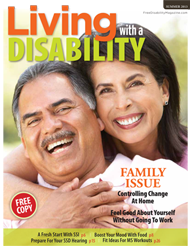Symptoms of Fibromyalgia
Approximately two percent of the people in the United States have fibromyalgia. Symptoms vary by individual, weather, physical activity, stress level, and time of day. Common symptoms include:
- Widespread pain. Constant dull ache on both sides of the body, including above and below the waist.
- Tender points. Pain with firm pressure on the back of the head, on top of shoulders and between shoulder blades, on the upper chest and front side of neck, on the outer elbows and inner knees, and/or on the hips.
- Fatigue and sleep disturbances. Tiredness upon wakening, restless leg syndrome, and sleep apnea.
- Morning stiffness.
- Problems with thinking and memory.
- Other medical conditions that people who have fibromyalgia may also have:
- Chronic fatigue syndrome
- Depression
- Endometriosis
- Headaches
- Irritable bowel syndrome
- Lupus
- Osteoarthritis
- Post-traumatic stress disorder (PTSD)
- Rheumatoid arthritis
Treatment Options
Treatment for fibromyalgia focuses on minimizing symptoms and improving overall health. Self-care, medication, therapy, and alternative treatments play important roles in fibromyalgia treatment.
- Self-care
Reduce stress. Limit stressful activities, but do not withdraw from life completely. Pace yourself.
Get enough sleep. Keep a regular sleep routine and avoid daytime napping.
Exercise regularly. Regular exercise reduces pain.
Watch your diet. Eat healthy foods. Limit caffeine.
Enjoy life. Do something pleasurable every day.
- Medication
Antidepressants. The Food and Drug Administration recently approved milnacipran (Savella) to treat fibromyalgia symptoms. Other antidepressants may help promote sleep or relieve pain or fatigue.
Anti-seizure drugs. Prescription medications for treatment of epilepsy may reduce certain pain associated with fibromyalgia. Pregablin (Lyrica) is the first medication the Food and Drug Administration has approved to treat fibromyalgia.
Analgesics. Over-the-counter pain relievers such as acetaminophen, aspirin, ibuprofen, and naproxen sodium can ease the pain and stiffness of fibromyalgia. Doctors may prescribe Tramadol (Ultram) to be taken alone or with other medications.
- Therapy
Physical therapy or specific exercises may relieve pain and restore muscle balance. Stretching and hot/cold applications may also help. Physical therapists can design exercise routines for people with fibromyalgia.
Counseling and behavioral therapy can help people deal with stressful situations and the pain and fatigue of fibromyalgia.
- Complementary and Alternative Medicine
Ninety percent of people with fibromyalgia use some form of complementary and alternative treatments such as acupuncture, biofeedback, chiropractic care, hypnosis, magnesium supplements, magnet therapy, massage therapy, and/or tai chi. Scientific research on the effectiveness of such treatments is limited; however, some patients report relief from using these alternative treatments.










